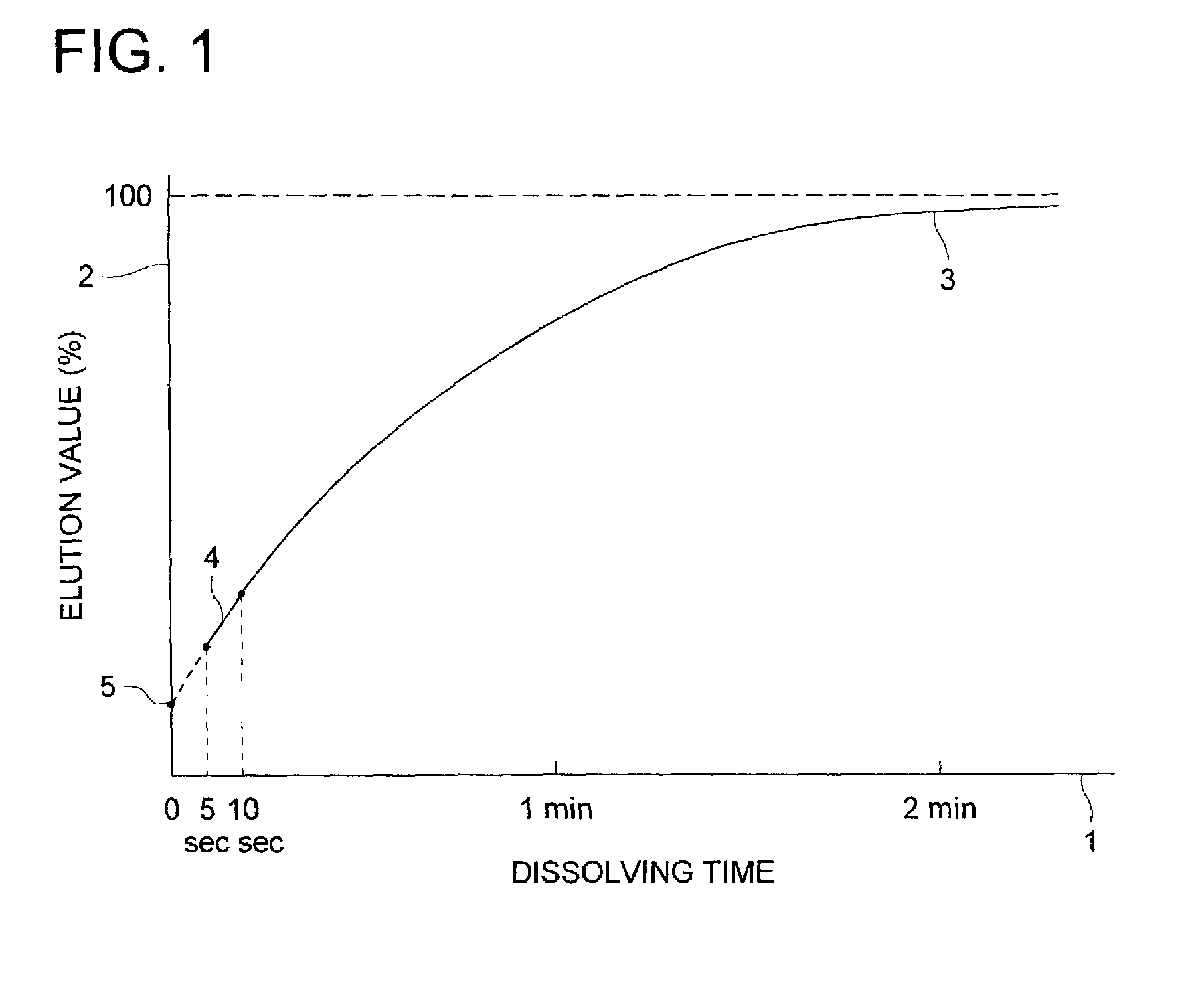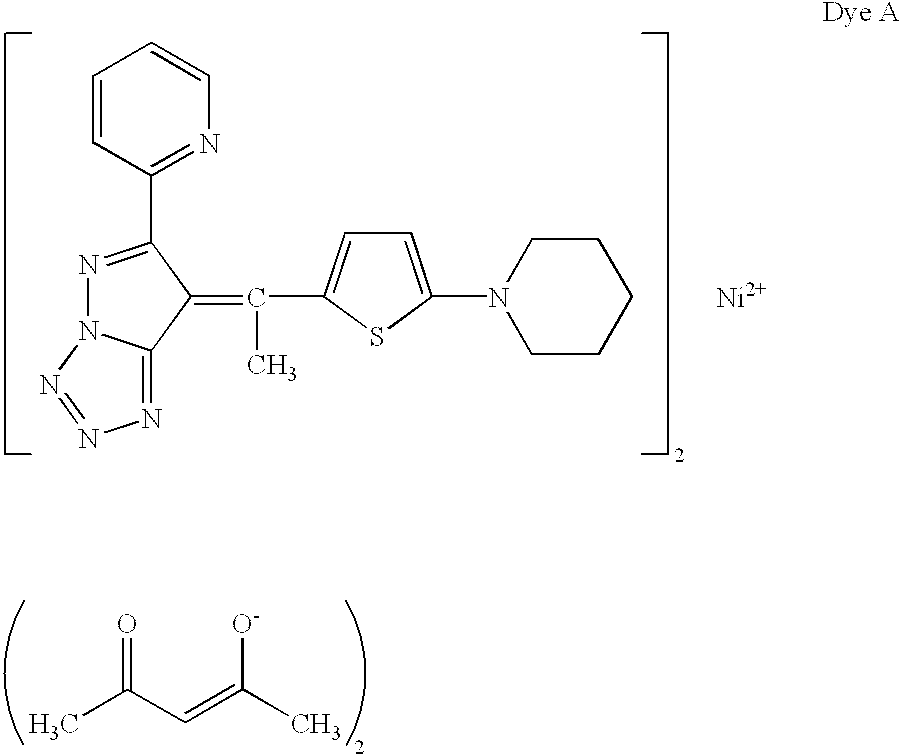Water-based ink comprising colored particles and image forming method using the same
a technology of colored particles and water-based inks, which is applied in the field of water-based inks, can solve the problems of inevitably degrading recording quality, limited use, bleeding of recording paper sheets, etc., and achieve excellent light fastness, excellent dispersion stability, and excellent water fastness
- Summary
- Abstract
- Description
- Claims
- Application Information
AI Technical Summary
Benefits of technology
Problems solved by technology
Method used
Image
Examples
synthetic example 1
Core Type Fine Dye-colored Particles
[0128]Charged into a separable flask were 4.6 g of polyvinyl butyral (BL-S, having an average degree of polymerization of 350, manufactured by Sekisui Kagaku Co., Ltd.), 3.1 g of Dye A, and 45 g of ethyl acetate, and air in said flask was replaced with nitrogen gas. Subsequently, said polymer and dye were thoroughly dissolved while stirring. Thereafter, 90 g of an aqueous solution containing 1.9 g of sodium laurylsulfate was added dropwise and stirred. The resultant mixture was then emulsified for 300 seconds employing an ultrasonic homogenizer (Type UH-150, manufactured by MST Co., Ltd.). Thereafter, ethyl acetate was removed under reduced pressure whereby fine colored particles, impregnated with said dye, were prepared. The average particle diameter was 87 nm. Incidentally, the particle diameter in the present invention refers to the volume average particle diameter which is determined employing a laser particle analysis system, manufactured by ...
synthetic example 2
Core-shell Type Fine Colored Particles
[0130]Added to the core type fine colored particle dispersion, prepared in Synthetic Example 1, was 0.15 g of potassium persulfate, which was dissolved. The resultant dispersion was heated to 80° C., employing a heater. Subsequently, the heated solution underwent reaction for 7 hours while dripping a solution containing 1.5 g of styrene and 1.5 g of 2-hydroxyethyl methacrylate, whereby core-shell type fine colored particles were prepared. The average particle diameter was 98 nm.
synthetic example 3
Core-shell Type Fine Colored Particles
[0132]Charged into a separable flask were 4.6 g of polyvinyl butyral (BL-S, having an average degree of polymerization of 350, manufactured by Sekisui Kagaku Co., Ltd.), 3.1 g of C.I. Solvent Yellow 88 and 45 g of ethyl acetate, and air in said flask was replaced with nitrogen gas. Subsequently, said polymer and dye were thoroughly dissolved while stirring. Thereafter, 90 g of an aqueous solution containing 1.9 g of sodium laurylsulfate was added dropwise and stirred. The resultant mixture was then emulsified for 300 seconds employing an ultrasonic homogenizer (Type UH-150, manufactured by MST Co., Ltd.). Thereafter, ethyl acetate was removed under reduced pressure whereby fine colored particles impregnated with said dye were prepared. Added to the resultant particles was 0.15 g of potassium persulfate, which was then dissolved. The resultant dispersion was heated to 80° C., employing a heater. Subsequently, the heated solution underwent reactio...
PUM
| Property | Measurement | Unit |
|---|---|---|
| volume average diameter | aaaaa | aaaaa |
| weight ratio | aaaaa | aaaaa |
| weight ratio | aaaaa | aaaaa |
Abstract
Description
Claims
Application Information
 Login to View More
Login to View More - R&D
- Intellectual Property
- Life Sciences
- Materials
- Tech Scout
- Unparalleled Data Quality
- Higher Quality Content
- 60% Fewer Hallucinations
Browse by: Latest US Patents, China's latest patents, Technical Efficacy Thesaurus, Application Domain, Technology Topic, Popular Technical Reports.
© 2025 PatSnap. All rights reserved.Legal|Privacy policy|Modern Slavery Act Transparency Statement|Sitemap|About US| Contact US: help@patsnap.com


